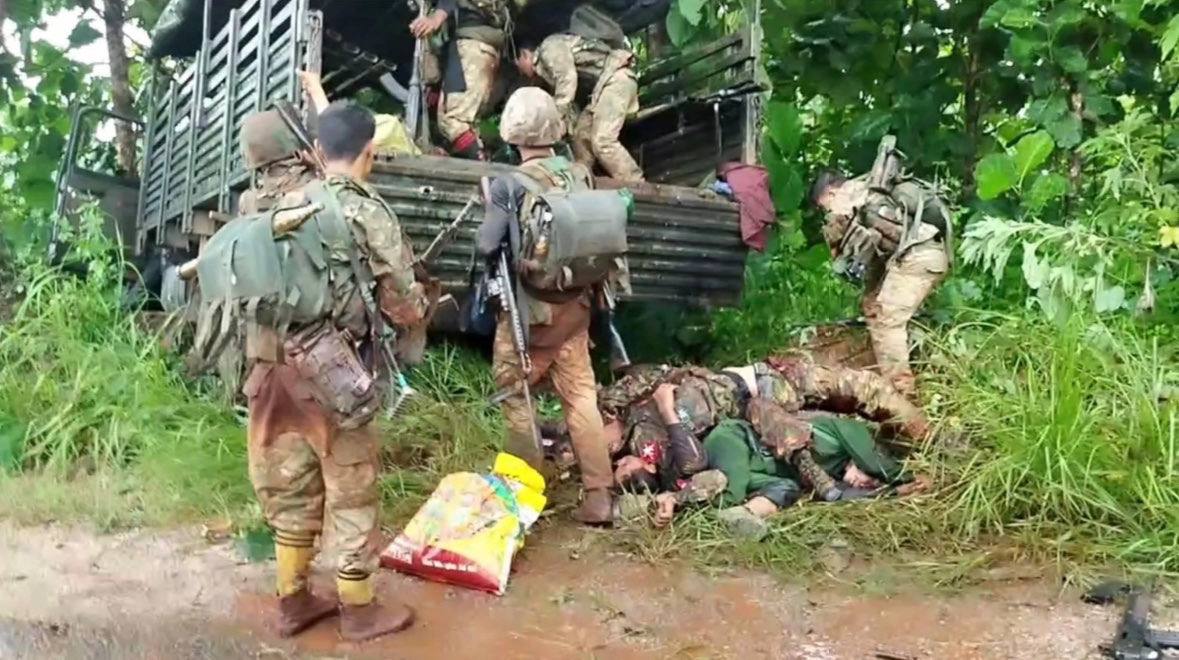Myanmar’s regime leader Min Aung Hlaing has wooed several militias in northern Shan State amid rising attacks across the sprawling border region.
The junta is suffering from troop shortages as many Shan-based units are fighting in neighboring Kayah State.
Since late July, heavy fighting has broken out between the junta and two powerful armed groups, the Kachin Independent Army (KIA) and Ta’ang National Liberation Army (TNLA), in Kutkai and Muse townships near the Chinese border.
The TNLA and resistance allies have been attacking regime targets in Madaya, Pyin Oo Lwin and Mogkok townships in northern Mandalay Region and Kyaukme and Nawnghkio townships in northern Shan State.
Resistance attacks threaten the Mandalay-Muse highway, the main Chinese trade route.
On Sunday, Min Aung Hlaing and his air force and naval chiefs, met seven militia leaders, including the junta’s border guard force, at the Northeastern Command headquarters in Lashio, according to a junta statement.
Praising the militias’ patriotic spirit in supporting the regime’s mission to bring peace and stability to Shan State, the junta chief urged militia leaders to ask all other armed organizations to participate in establishing peace.
“The people’s militia in northern Shan State need to cooperate with the government, Tatmadaw [military] and the people in efforts for regional peace and stability, the rule of law and socio-economic progress,” said Min Aung Hlaing. “The state and Tatmadaw will assist.”

The regime’s leader said northern Shan State is of political and economic significance because of its border with China and its border trade.
An analyst told The Irrawaddy on Tuesday that the junta attempted to persuade the militias to fight because it lacks troops with two divisions from Shan State engaged in Kayah State.
A Karenni State Consultative Council representative recently told the media that the junta has used 38 battalions under three commands, including Division 55 from Shan State, in Kayah State, which is over 65 percent controlled by revolutionary groups.
The analyst said besides fighting the KIA and TNLA, the junta might soon face the powerful Myanmar National Democratic Alliance Army, an ethnically Kokang armed group in northern Shan State.
“The junta is trying to persuade the militias to fight. There must be a good incentive for those groups” he said.
Most of the Shan militias have been operating gambling businesses and drug smuggling operations with the permission of Myanmar’s military for decades.
The regime faces attacks across Myanmar, except in Rakhine State where the Arakan Army agreed a temporary ceasefire last November.

















